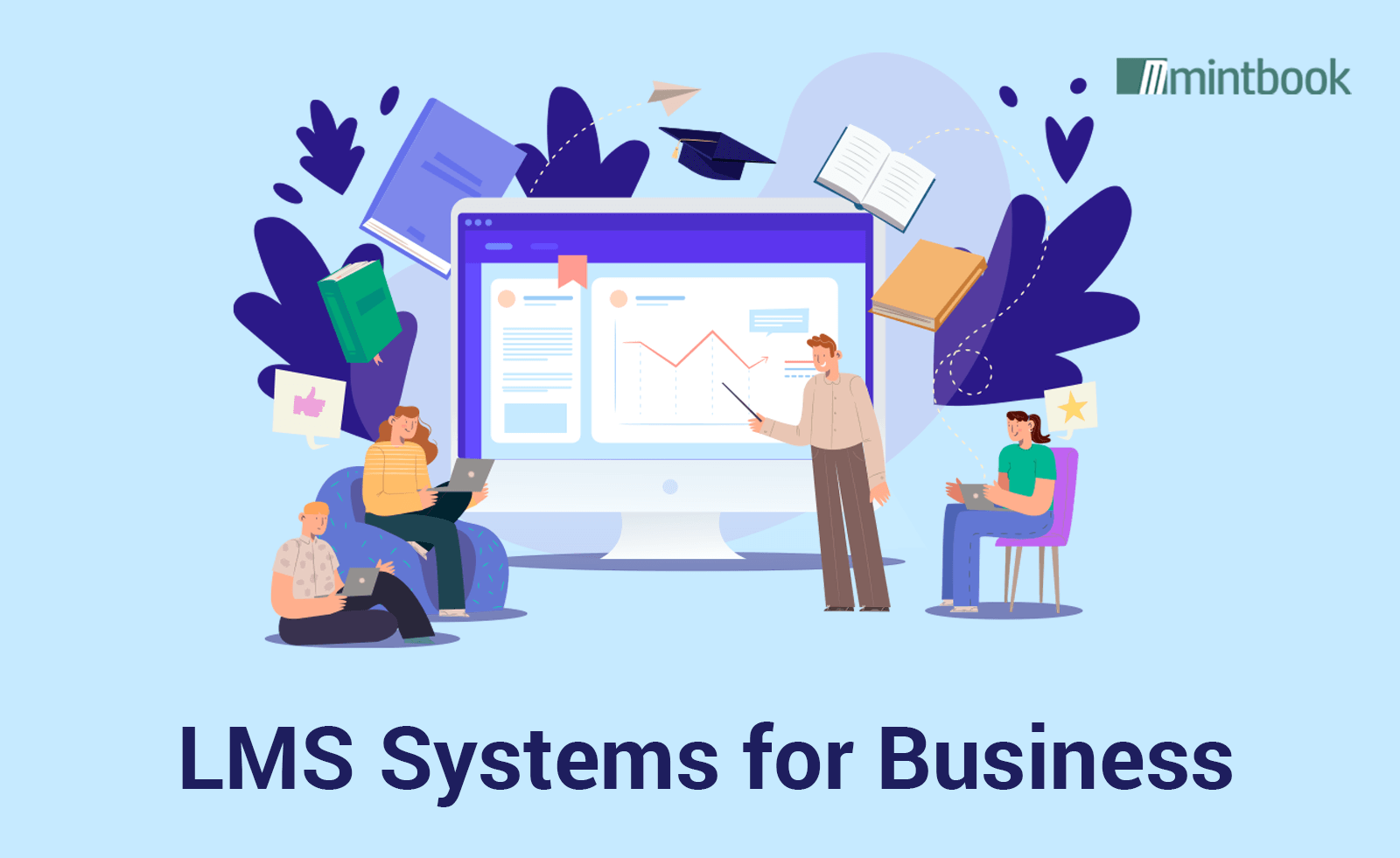 LMS Systems for Business
LMS Systems for Business
As highlighted by several studies, businesses have been increasing their learning and development (L&D) budgets across industries. The increase in budgetary allocation helps them leverage Industry 4.0 technologies and adopt emerging industry trends by improving employees’ knowledge, skills, and competencies.
At the same time, the strategic investment helps them boost operational efficiency and mitigate process disruptions by hiring and retaining good talent. Most companies and startups these days drive L&D initiatives by running multiple training programs. They further improve the process and curb costs by implementing cloud-based eLearning tools.
Most businesses implement learning management systems (LMS) to create, deliver, manage, and monitor various training, reskilling, and upskilling programs. They further meet their precise L&D needs by customizing and integrating cloud-based LMS systems. However, decision-makers often find it challenging to select the right enterprise LMS for business.
We are helping businesses to make the right decision and implement the best LMS software by discussing 11 important selection criteria.
11 Criteria for Comparing Leading LMS Systems for Business
-
UI and UX
Employees will interact with the LMS through its user interface (UI). They can use the software without referring to a user manual when it features an intuitive UI. Likewise, employees will access the LMS using various devices and platforms. It becomes easier for them to acquire knowledge when the software delivers a smooth and consistent user experience (UX) across computer and mobile devices. Hence, decision-makers must evaluate the software’s UI and UX before considering its features and functionality.
-
Multi-Format Content Support
The choices of digital content vary across consumers. Gen Z consumers prefer watching videos or listening to audio, while older consumers still read eBooks and journals. Hence, businesses need LMS systems that deliver eLearning content in multiple formats and languages. While shortlisting LMS systems for businesses, decision-makers must check if software enables employees to acquire knowledge by accessing audio, video, eBooks, journals, simulations, and quizzes. Also, they need to ensure that employees can use the software to access eLearning content using computers or mobile devices.
-
eLearning Assessments
Unlike traditional learning, eLearning measures learners’ progress and knowledge using assessments. In addition to assessing a learner’s understanding of a topic, assessments measure his knowledge after completing a course. It becomes easier for L&D managers to measure learner progress and performance when the LMS supports different forms of assessments and tests. Decision-makers must check if the LMS supports popular eLearning assessments like open questions, multiple choice questions, fill-in-the-blanks, and true/false questions.
-
Content Authoring Tools
Content is often regarded as the oil that drives L&D activities. No business can make L&D programs successful without delivering relevant and up-to-date information to employees. It becomes easier for them to create eLearning content in various formats when the LMS features built-in content authoring tools. However, decision-makers must consider LMSs that curb content creation time and costs by featuring complimentary digital library software and content curation tools.
-
Dashboard
As an information management tool, dashboards display and monitor real-time data visually. When the LMS features an intuitive dashboard it becomes easier for managers to monitor learners and training programs in real time. Also, they can analyze eLearning data using important metrics like learner progress, learner performance, course completion, and course program. The dashboard will help them track these important L&D metrics by supporting custom report generation and scheduling.
-
Learner Engagement
While comparing LMS systems for business, selectors should remember that only 15% of learners complete online courses successfully. They must foster learner engagement by opting for an LMS that supports collaborative and gamified learning. They should prioritize LMS systems that facilitate collaboration in a virtual learning environment by providing options like discussion forums, query corners, and chat rooms. In addition, they need to ensure that the software gamifies the learning experience by offering features like scorecards, virtual coins, and badges.
-
Complimentary eLearning Tools
Many providers make their company LMS systems popular by providing complimentary eLearning tools. For instance, leading LMSs come with complimentary eLearning solutions like digital library software and online classroom software. In addition to extending the LMS, these complimentary tools streamline the L&D process by simplifying important tasks like hybrid learning model adoption and eLearning content creation.
-
Data Security
Often businesses use LMS systems for employee training, partner training, and customer training processes. Hence, an LMS will be accessed by various stakeholders. That is why; decision-makers must check if the LMS software optimizes data security and privacy. They must eliminate the risks of data breaches by choosing software that supports data encryption, password protection, access restrictions, and periodic security audits.
-
Integration Capabilities
A business can ensure seamless eLearning data exchange by integrating the LMS software with existing eLearning and enterprise solutions. It becomes easier for the IT team to integrate the LMS with existing tech tools using application programming interfaces (APIs). The APIs will form a unified learning platform for business by ensuring that integrated eLearning solutions communicate with each other automatically and seamlessly.
-
Learning Analytics
The LMS, along with other eLearning tools, will generate and gather eLearning data regularly. However, decision-makers can make informed decisions only when they make sense of the raw data. Leading LMS systems analyze the raw data and gain actionable insights using data analytics solutions. The data-driven insights shared by the software highlight what is working and what is not. Also, decision-makers can boost L&D programs by identifying trends and patterns.
-
Awards and Recognitions
ELearning Excellence Awards highlight eLearning tools that stand out from competitors by optimizing user experiences and using cutting-edge technologies. While evaluating LMS systems for business, decision-makers must consider the prestigious awards and recognitions earned by the software. In addition, they must assess the provider’s credentials based on certifications issued by the International Organization for Standardization (ISO).
Conclusion
Enterprise LMS systems help businesses run various L&D programs by reducing costs and complexities. However, an enterprise must integrate the LMS with other eLearning tools to streamline and improve the L&D process. Hence, decision-makers must prioritize LMS systems for businesses available as part of unified learning systems. The unified learning system eliminates the need to implement and integrate multiple eLearning tools, including LMS systems.








Leave a Reply